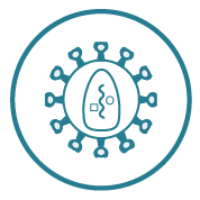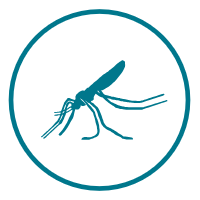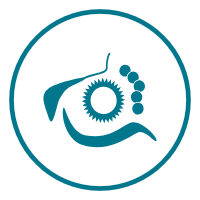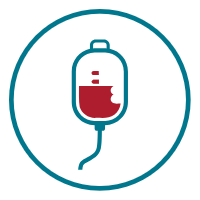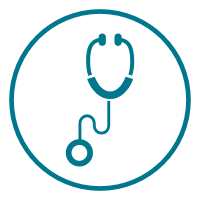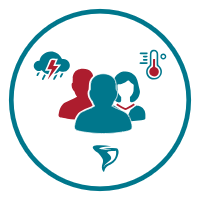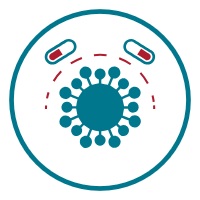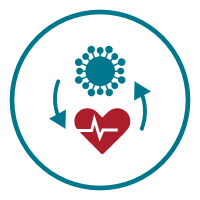This page provides a quick and non-binding summary of the research priorities outlined in the Strategic Research and Innovation Agenda.
Goal: Support achieving UNAIDS 95-95-95 targets.
- Focus on priority populations: infants, children, pregnant women, stigmatised, discriminated and criminalised populations.
- Focus on coinfections and comorbidities.
- Address HIV drug resistance and promote access to resistance testing.
- Deliver new prevention technologies (long-acting PrEP, broadly neutralising antibodies, vaccines).
- Advance community-driven and people-centred approaches to treatment and prevention.
Goal: End the TB epidemic by 2035.
- Develop shorter, effective treatment regimens for all TB forms.
- Develop and evaluate novel approaches for the early diagnosis of active TB.
- Shorten the duration of therapy.
- Improve treatments for both drug-sensitive and drug-resistant TB.
- Prevent relapse.
- Reduce drug resistance.
- Prevent long-term lung damage.
- Prevent latent TB infection from progressing to active TB.
- Improve point-of-care diagnostics and drug resistance testing.
- Develop host-directed therapies that can shorten the duration of therapy and improve treatment outcomes.
- Evaluate adjunct host-directed therapies based on repurposed drugs, cellular therapies, and other immunomodulatory.
- Emphasise implementation research and integrated TB-HIV care.
- Support host-directed therapies and coinfection studies (especially HIV-TB).
Goal: End the malaria epidemic by 2030.
- Prioritise children, pregnant women, adolescents, and vulnerable groups.
- Evaluate integration with other treatments (e.g. HIV/TB).
- Develop novel tools to treat and prevent malaria in early pregnancy.
- Support field-testing diagnostics, vector control, and elimination strategies.
- Develop new drugs, single-dose therapies, and chemoprevention tools.
- Field-test diagnostics to identify low-level infections and resistance.
- Advance malaria vaccines (sporozoite, blood-stage, transmission-blocking).
Goal: Eliminate NIDs and ensure effective delivery of health.
- Develop precise diagnostic tools, improved treatments, novel drugs, and vaccines.
- Investigate co-infections with malaria, TB, HIV, and non-communicable diseases.
- Emphasise disease prevention, effective management, and vector control.
- Conduct clinical trials of combination therapies and evaluate delivery models for preventive chemotherapy.
- Promote integration of NID care into people-centred universal health systems.
- Support early-phase clinical trials where no effective treatments currently exist.
- Advance vector control and integrated disease control strategies for vector-borne NIDs.
- Strengthen clinical and regulatory infrastructure to support local health systems and sustain progress.
Goal: Reduce the burden of diarrhoeal diseases and end preventable deaths of children under 5 years of age.
- Support development and delivery of new vaccines (e.g. rotavirus, Shigella, cholera, enterotoxigenic E. coli, Cryptosporidium, norovirus).
- Advance research in innovative delivery mechanisms, including combination vaccines.
- Support point-of-care diagnostics and enhance laboratory capacity.
Goal: Reduce preventable deaths, especially in children, the elderly, and the immunocompromised.
- Support new and improved point-of-care diagnostics and imaging tools.
- Short-duration trials of antibiotic treatments.
- Evaluate host-directed therapies to strengthen immunity and improve outcomes.
- Enhance low-cost oxygen delivery methods for hypoxaemia in children.
- Develop and evaluate vaccines, including maternal ones.
- Prioritise research in high-risk populations and under-researched pathogens.
- Prioritise pathogens with existing or in-development vaccines: group B streptococci (GBS), respiratory syncytial virus (SRV), pneumococcus, and cytomegalovirus (CMV).
Goal: Strengthen preparedness, prevention and response capacities in sub-Saharan Africa.
- Maintain emergency funding for rapid outbreak response.
- Strengthen surveillance and laboratory systems for early detection and diagnosis.
- Develop regional data hubs linking genomics and clinical data to inform swift public health actions.
- Build local capacity for a tailored, resilient public health approach for sub-Saharan Africa.
- Promote adaptive platform trials and harmonised master protocols; support trial design and regulatory readiness.
- Invest in community engagement, participatory research, and social sciences to combat misinformation and stigma.
Goal: Reduce the health impacts of climate-driven increases in infectious diseases.
- Support research to understand links between climate conditions and disease outbreaks.
- Evaluate and strengthen public health responses and infrastructure.
- Invest in surveillance, emergency response systems, and vector control.
- Promote public health training as a key climate adaptation strategy.
Goal: Mitigate the impact of AMR on infectious disease control in sub-Saharan Africa.
- Prioritise poverty-related and neglected diseases most affected by AMR and posing major health security risks.
- Develop novel treatments and point-of-care diagnostics to guide antibiotic use.
- Promote antibiotic stewardship and digital health tools to reduce misuse.
- Advance vaccines and immune-based interventions to lower infection burden.
- Support research to update treatment guidelines based on resistance patterns.
Goal: Contribute to WHO’s vision of a world free of the avoidable burden of NCDs.
- Support studies on comorbidities that impact the safety or effectiveness of infectious disease treatments.
- Fund research on interventions to prevent or treat NCDs in patients with infectious diseases, and vice versa.
- Promote integrated, patient-centred care models that address both infectious and non-communicable diseases.
